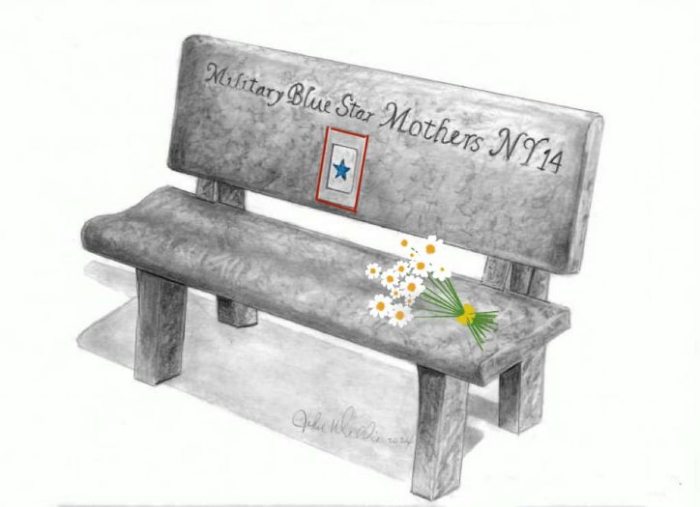Remembering Yankee Stadium On Its Centennial
It was 100 years ago this month that the most famous stadium in America was built. The original Yankee Stadium is no more. A new ballpark sits across River Avenue. The history of both grand structures center around one man.
In the early 1900s, John McGraw’s New York Giants baseball won nine pennants and three World Series’ in a 20-year time span. Up in Boston, the Red Sox were building their own mini-dynasty, winning world titles in 1912, 1915, and 1916. The Red Sox boasted a pitching staff that included Babe Ruth. The latter, an ace lefthander, set a World Series record for pitching 29 consecutive scoreless innings in the Fall Classics of 1916 and 1918. The young Ruth was also a force at the plate. Using an upper cut swing, copied after Joe Jackson, Ruth started blasting home runs at a record pace.
Baseball is a business and so it was with the Red Sox. The team’s owner, Harry Freeze, had lost money on a Broadway production. To salvage the loss, he sold Ruth to the New York Yankees. Baseball history changed on a dime. In 1920, the Yankees had long been tenants of the Giants, playing in the Polo Grounds. That year, Ruth became a sensation, belting 54 home runs. The Yankees also outdrew the Giants in the latter’s own ballpark. An outraged McGraw ordered the Yankees to clear out of Harlem—and in a hurry.
Col. Jacob Ruppert, the beer baron owner of the Bombers, found a plot of land across the Harlem River in The Bronx. By April 18, 1923, Yankee Stadium, complete with its iconic façade, was open for business. The greatest showman in sports, Ruth christened the stadium, slugging a three-run home run in the 4-1 win over those same Red Sox.
The Yankee dynasty rolled on. From 1920 to 1932, the Yankees won seven pennants and five World Series. In 1925, Ruth was joined in the Yankee lineup by Yorkville native Lou Gehrig. In 1934, Ruth was released and signed a contract to play for the Boston Braves. No matter. Two years later, Joe DiMaggio joined a powerhouse that included Hall of Famers Gehrig, Tony Lazzeri, Bill Dickey, Earle Combs, Red Ruffing, and Lefty Gomez as the Bombers, from 1936 to 1947, won eight more pennants and seven World Series.
Blessed by a scouting system led by Paul Krichell and a front office manned by George Weiss, the dynasty never skipped a beat. When Weiss, in 1949, hired Casey Stengel as a manager, the press were amazed that the clownish Casey could ever manage the majestic Yankees. Stengel, however, had been a successful minor league manager. He knew how to develop young players. He would soon lead the Yankees’ to their greatest heights. From 1949 to 1964, they won 14 pennants and nine world titles. The young Mickey Mantle replaced the great DiMaggio. Whitey Ford, the cocky lefty from Astoria, joined an ace rotation that included Vic Raschi, Allie Reynolds, and Eddie Lopat.
After the 1960 season, Yankee management, afraid of losing Ralph Houk to another team, fired Stengel and inexplicably, George Weiss as well. Houk won three straight pennants and Yogi Berra won the AL crown in 1964. Without Weiss, however, the team went into a tailspin.
But not for long. By the early 1970s, the team was on the rebound. Smart trades and George Steinbrenner’s willingness to open his wallet for such free agents as Catfish Hunter, Reggie Jackson, and Rich Gossage led to another exciting run: Five division titles, four pennants and two World Series crowns during a run from 1976-1981. Such home grown talent as Thurman Munson, Roy White, and Ron Guidry also proved indispensable.
The Eighties were an exciting time, paced by the trio of Don Mattingly, Rickey Henderson, and Dave Winfield. But without solid pitching, no titles. With Gene Michael as general manager and Buck Showalter as skipper, the groundwork was laid for the Joe Torre-Derek Jeter-Paul O’Neill-Mariano Rivera-Bernie Williams era when the Yanks, from 1996 to 2001 won five pennants and four World Series to solidify their standing as Team of the Century.
Why were the Yankees so successful? The old Yankee Stadium was a pitcher’s ballpark. Sure, there was the short right field porch built for Ruth, Gehrig, Bill Dickey, Yogi Berra, the switch-hitting Mantle, Roger Maris, Graig Nettles, Jackson, and O’Neill. Left field, however, was Death Valley: All the way to 430 ft. and 461 ft. in left center. Lefty pitchers dominated: Herb Pennock, Lefty Grove, Whitey Ford, Eddie Lopat, Al Downing, Sparky Lyle, Ron Guidry, Dave Righetti, Andy Pettitte, and Mike Stanton.
Memorable moments? An entire volume (or two) is necessary. We’ll name a few: Babe Ruth’s 60th home run on the next to the last day of the 1927 season, the 1949 final two-game sweep of the Red Sox giving Stengel his first pennant, Don Larsen’s perfect game in the 1956 World Series, Roger Maris’s 61st home run on the final game of the 1961 campaign, Chris Chambliss’ 1976 pennant-winning homer, Reggie Jackson’s three home runs in the 1977 Fall Classic, perfect games by David Cone and David Wells. Advertising, give me more space.
The Yankee history is Shakespearian in scope and emotion: The Falstaffian largess of Babe Ruth and Casey Stengel, the Mantle, Ford and Billy Martin band of brothers offset also by tragedy: A dying Lou Gehrig’s “Today, I consider myself the luckiest man on the earth” speech at the July 4, 1939 Old Timer’s Day, sadly augmented 60 years later in Aug. 4, 1979 as a capacity crowd gave the late Thurman Munson “the most moving tribute I’ve ever heard in a ballpark” (Frank Messer, longtime Yankees’ broadcaster) two days after the Yankee captain died in a plane crash in Canton, OH. At that time, Gehrig and Munson were the only two captains in Yankee history. Since then, Graig Nettles, Ron Guidry, Willie Randolph, Don Mattingly, Derek Jeter and now, Aaron Judge have worn that honor.































